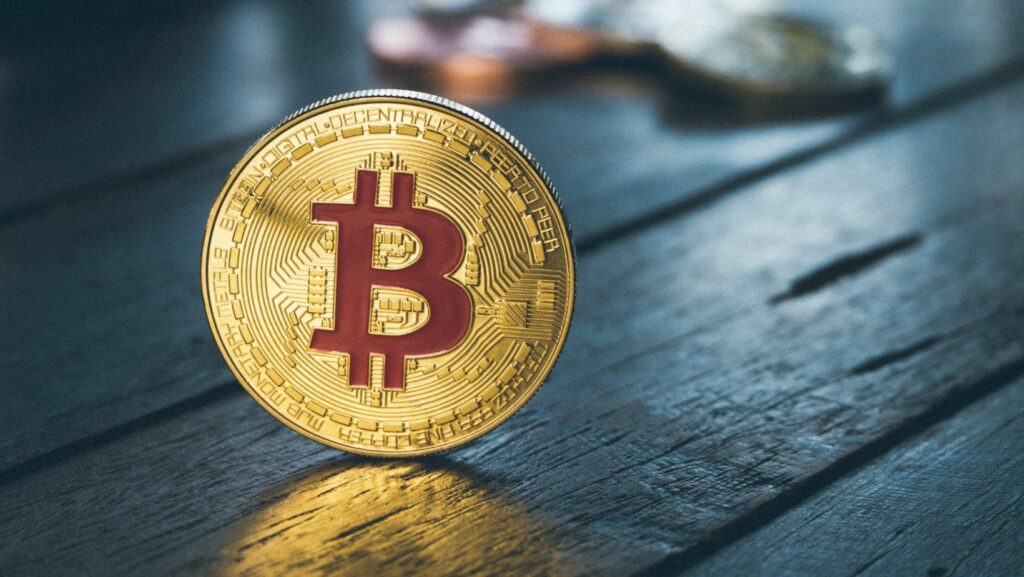Bitcoin and blockchain technology have the potential to change the way we interact with the world around us. While the full extent of its potential is still unknown, it has already begun to revolutionize the way we think about currency, contracts, and even ownership. In this article, we will explore the potential future of blockchain for Bitcoin and other cryptocurrencies.
What is Blockchain?
Blockchain is often associated with Bitcoin and other cryptocurrencies, but the technology has many other potential uses. So, what is blockchain? In its simplest form, a blockchain is a digital ledger of transactions. When a transaction is made, it is recorded on a block, and each new block is chained to the previous one. This creates a permanent, public record of all transactions.

What is Bitcoin?
Bitcoin is a cryptocurrency and a payment system, first proposed by an anonymous person or group of people under the name Satoshi Nakamoto in 2008. Bitcoin is a decentralized system, which means there is no central authority or middleman controlling it. Transactions are verified and confirmed by a network of nodes, or computers, on the Bitcoin network, and each transaction is recorded in a public ledger called a blockchain. Bitcoin can be used to buy things electronically, like other cryptocurrencies. However, one key difference that sets Bitcoin apart from other cryptocurrencies is that it can also be used to buy real-world goods and services.
What is Blockchain for Bitcoin
A distributed ledger is a database that is consensually shared and synchronized across network of computers so that the records it keeps are public and easily verifiable. No one person or entity has control over the data, which means the data cannot be altered retroactively without the agreement of everyone involved.
The first generation of the Internet created a platform for information sharing, but it did not give rise to a trustless system. We rely on central authorities, like governments and corporations, to verify and protect our online information. Blockchain technology promises to do for transactions what the Internet did for information – provide a public platform that is consensus-driven, decentralized, secure, and trustworthy.
In simple terms, blockchain is a digital ledger of economic transactions that can be programmed to record not just financial transactions but virtually everything of value. Don Tapscott, author of Blockchain Revolution (2016)
A blockchain is essentially a digital ledger of all cryptocurrency transactions. Emerging as a key technology behind Bitcoin – the first major cryptocurrency – blockchain has since been adopted by various other digital currencies. Put simply, a blockchain is a chain of blocks which contain data (in this case cryptocurrency transactions).
What is a Smart Contract?
A smart contract is a computer protocol that allows two parties to interact and trade without the need for a central authority. Smart contracts are self-executing and can be used for a wide range of transactions, from managing financial assets to recording medical data. The use of smart contracts can reduce costs, increase efficiency, and promote transparency and trust between parties.

How Does Blockchain Work?
Blockchain is a digital ledger of all Bitcoin transactions that have ever been executed. It is constantly growing as “completed” blocks are added to it with a new set of recordings. Each block contains a cryptographic hash of the previous block, a timestamp, and transaction data. Bitcoin nodes use the block chain to differentiate legitimate Bitcoin transactions from attempts to re-spend coins that have already been spent elsewhere.
How is a Blockchain Created?
Creating a blockchain starts with a genesis block, which is the first block in the chain. This block is usually hardcoded into the software used to create the blockchain. The genesis block typically contains a timestamp and link to the previous block, and it can also contain other data. Once the genesis block has been created, anyone can create blocks and add them to the chain.
To add a new block to the blockchain, someone must first solve a complex math problem. This is known as mining, and it’s how new blocks are created. When a new block is mined, the miner who found the solution is rewarded with crypto tokens. Once a block is mined and added to the chain, it cannot be changed or removed. This makes blockchain one of the most secure data storage methods available.
Blocks in a blockchain are often chained together using cryptographic hashing. This means that each new block contains a link to the previous block, creating a chain of blocks that can be used to track data changes over time. Bitcoin’s blockchain uses SHA-256 hashing, which creates unique identifiers for each block that are 64 characters long.
How is a Blockchain Maintained?
How is a Blockchain Maintained?
In order to maintain a blockchain, there must be network participants who are willing to devote computing power to verifying and relaying information across the network. These participants are called node runners, and they can be compensated with cryptocurrency for their participation.
Node runners keep the blockchain secure by using cryptography to ensure that each transaction is valid and adding it to the chain only if it is. In this way, node runners verify and relay information across the network without central authority.
The security of the blockchain comes from its decentralized nature. There is no central point of failure, and if one node goes down, the others can pick up the slack. Additionally, all data is encrypted so that it is not possible for bad actors to tamper with it.
The Future of Blockchain for Bitcoin
Blockchain is often hailed as the most disruptive innovation since the internet itself. While its potential applications are still being explored, there is no doubt that blockchain has the potential to change the way we interact with technology.
One of the most promising applications of blockchain is in the realm of digital currencies. Bitcoin, the first and most well-known cryptocurrency, has seen tremendous growth in recent years as more and more people adopt it as a means of exchange.
As Bitcoin continues to grow in popularity, so too does interest in blockchain. The technology behind Bitcoin has far-reaching implications that go beyond simply serving as a digital currency. With its ability to provide security, transparency, and decentralization, blockchain has the potential to revolutionize many industries.
What is a Fork?
A fork is a change to the software of the blockchain that creates two separate versions of the blockchain with a shared history. Forks can happen on any blockchain, but they are most common on decentralized networks like Bitcoin.
Forks can happen accidentally (if two miners find blocks at the same time) or intentionally (if a developer wants to change the protocol). unintentional forks are usually resolved quickly, but intentional forks can create permanent splits in the network.
When a fork occurs, all of the nodes ( computers that are connected to the network ) need to switch to the new version of the software. This can be a difficult process, and it often leads to contention and conflict within the community.
What are the Benefits of Blockchain?
Many people see the potential of blockchain technology and its ability to create trustless systems. For Bitcoin, blockchain is the perfect solution to help secure the network and keep track of all transactions. Blockchain also has the potential to make other financial institutions obsolete. In this section, we will go over all the benefits of blockchain technology.
What is Decentralization?
Decentralization is the process of distributing or dispersing functions, powers, people or things away from a central location or authority. In a decentralized system, there is no central authority or power that controls everything. Instead, each entity in the system has some degree of control.
What is Immutability?
Immutability is one of the defining features of a blockchain. It is what allows blockchain to provide a high level of security, as well as other benefits.
In simple terms, immutability means that once data is entered into the blockchain, it cannot be changed. This is made possible by the fact that each block in the chain contains a cryptographic hash of the previous block. This hash is like a fingerprint for the data in the block, and it changes if even one character in the data is altered.
This means that once data is entered into the blockchain, it can be considered immutable — it cannot be changed without changing the entire chain.
The immutability of blockchain has a number of benefits:
- It makes blockchain very secure, because changing even one block would require changing all subsequent blocks — an incredibly difficult task.
- It allows for transparency, because all users can see every transaction that has ever been made on the blockchain.
- It provides trust, because users can be confident that the data on the blockchain has not been tampered with.
